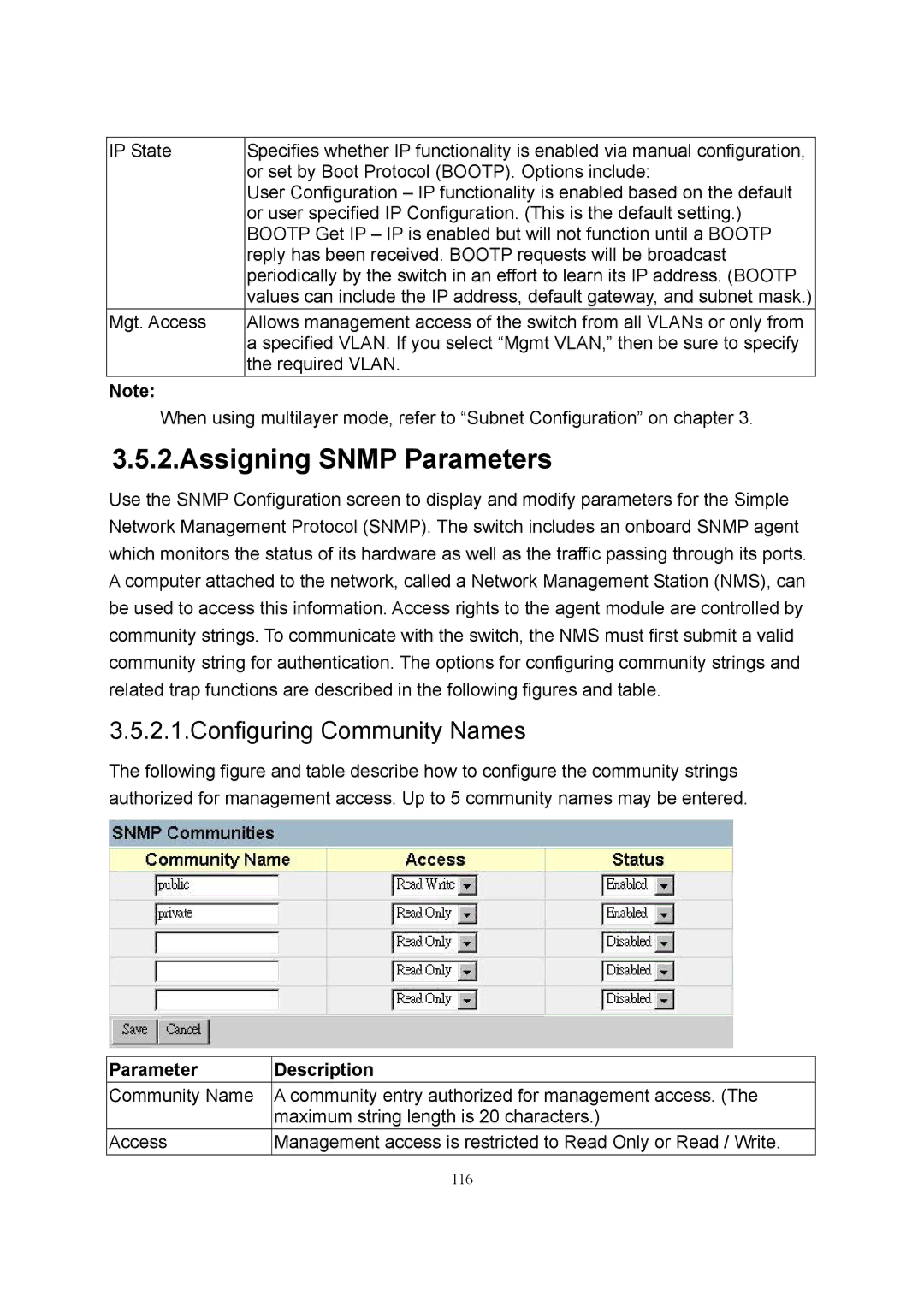
IP State | Specifies whether IP functionality is enabled via manual configuration, |
| or set by Boot Protocol (BOOTP). Options include: |
| User Configuration – IP functionality is enabled based on the default |
| or user specified IP Configuration. (This is the default setting.) |
| BOOTP Get IP – IP is enabled but will not function until a BOOTP |
| reply has been received. BOOTP requests will be broadcast |
| periodically by the switch in an effort to learn its IP address. (BOOTP |
| values can include the IP address, default gateway, and subnet mask.) |
Mgt. Access | Allows management access of the switch from all VLANs or only from |
| a specified VLAN. If you select “Mgmt VLAN,” then be sure to specify |
| the required VLAN. |
Note:
When using multilayer mode, refer to “Subnet Configuration” on chapter 3.
3.5.2.Assigning SNMP Parameters
Use the SNMP Configuration screen to display and modify parameters for the Simple Network Management Protocol (SNMP). The switch includes an onboard SNMP agent which monitors the status of its hardware as well as the traffic passing through its ports. A computer attached to the network, called a Network Management Station (NMS), can be used to access this information. Access rights to the agent module are controlled by community strings. To communicate with the switch, the NMS must first submit a valid community string for authentication. The options for configuring community strings and related trap functions are described in the following figures and table.
3.5.2.1.Configuring Community Names
The following figure and table describe how to configure the community strings authorized for management access. Up to 5 community names may be entered.
Parameter | Description |
Community Name | A community entry authorized for management access. (The |
| maximum string length is 20 characters.) |
Access | Management access is restricted to Read Only or Read / Write. |
